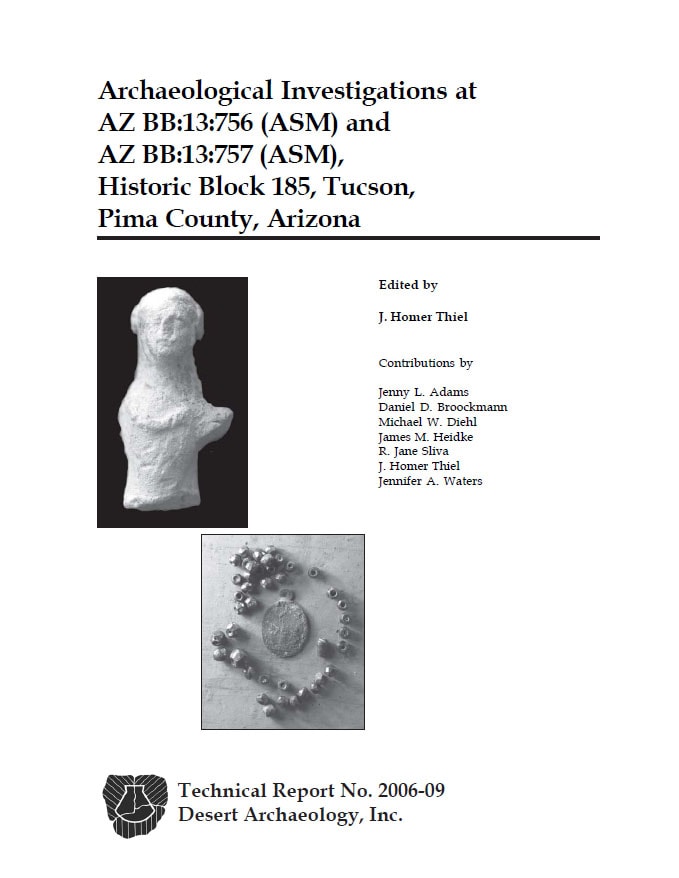Description
Archaeological Investigations at AZ BB:13:756 (ASM) and AZ BB:13:757 (ASM), Historic Block 185, Tucson, Pima County, Arizona (TR2006-9) (PDF)
Archaeological data recovery on Historic Block 185 documented features from two subsurface archaeological sites, AZ BB:13:756 (ASM) and AZ BB:13:757 (ASM). BB:13:756 included soil mining pits, where material to manufacture adobe bricks for the Tucson Presidio was collected, and the foundations of twentieth century dwellings. BB:13:757 consisted of portions of two canals, one dating to the Prehistoric era and one filled with Territorial-era trash.
These resources were determined to be significant during the testing phase of the project. The subsequent field work during the data recovery phase sought to document the features and recover a sample of the artifacts and food remains contained within them. The two sites were likely eligible for inclusion in the National Register of Historic Places under Criterion D, due to the significant information contained in the features uncovered, as well as the artifacts and food remains present in them.
Significant aspects of the site included the presence of a small prehistoric irrigation canal running northsouth through the project area. This is one of many irrigation canals constructed by the Hohokam residents of the Tucson Basin, bringing water from the Santa Cruz River to their agricultural fields. A second canal, filled with trash dating to the American Territorial period, was probably constructed much earlier. It is known that a canal ran along the base of the terrace during the Presidio era, with women from inside the fort washing clothes there under guard by Presidio soldiers.
The Presidio soldiers had also mined portions of the project area for dirt to make adobe bricks for fort construction. These pits then filled with trash and excavation yielded a small but interesting set of artifacts dating to the Spanish and Mexican periods of Tucson’s history. Of special mention is a religious medal and associated beads, a very rare find. Territorial-era trash was also recovered, including some items discarded by the Chinese residents who lived nearby.
The data recovery phase surpassed the goals outlined in the research design. Desert Archaeology, Inc., does not recommend any additional archaeological work for Historic Block 185. Following completion of fieldwork, a letter was submitted to the City of Tucson stating that construction work could commence on the parcel. Should any previously unidentified cultural materials be encountered during construction, work should be halted in that area and a qualified archaeologist contacted to evaluate the find.
